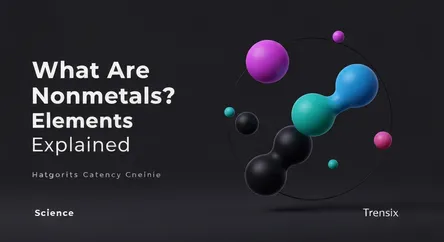Science
What Are Nonmetals? Elements Explained

An introduction to nonmetals, a diverse group of chemical elements essential to technology, industry, and life itself.
What is it?
A nonmetal is a chemical element that generally lacks the properties of a metal. They are typically poor conductors of heat and electricity, are not malleable or ductile (meaning they are brittle and will shatter if struck), and do not have a metallic luster. Nonmetals exist in all three states of matter at room temperature: gases like oxygen, a liquid like bromine, and solids like carbon and sulfur. Located mostly on the upper right side of the periodic table, with the exception of hydrogen, they have high ionization energies and electronegativity. This means they tend to attract and hold onto electrons when forming chemical bonds.
Why is it trending?
Nonmetals are fundamental to technological advancement and key industries. Silicon is the backbone of modern electronics, forming the basis of semiconductors vital for computer chips, solar cells, and other devices. As the world seeks cleaner energy sources, hydrogen is gaining attention as a potential fuel to reduce dependence on fossil fuels. In agriculture, nonmetals like nitrogen and phosphorus are essential components of fertilizers that support global food production. Their diverse applications in manufacturing, medicine, and material science ensure their continued relevance in scientific and industrial innovation.
How does it affect people?
Nonmetals are integral to human life and daily activities. Oxygen, which makes up about 21% of the atmosphere, is essential for breathing. Chlorine is widely used to purify drinking water and keep swimming pools safe. Carbon is the foundational element for all living organisms and is present in fuels we use for energy. In healthcare, iodine is used as an antiseptic, and nitrogen is used for cryopreservation. From the sulfur in matches to the helium in balloons, nonmetals are indispensable in countless products and processes that support health, nutrition, and modern conveniences.